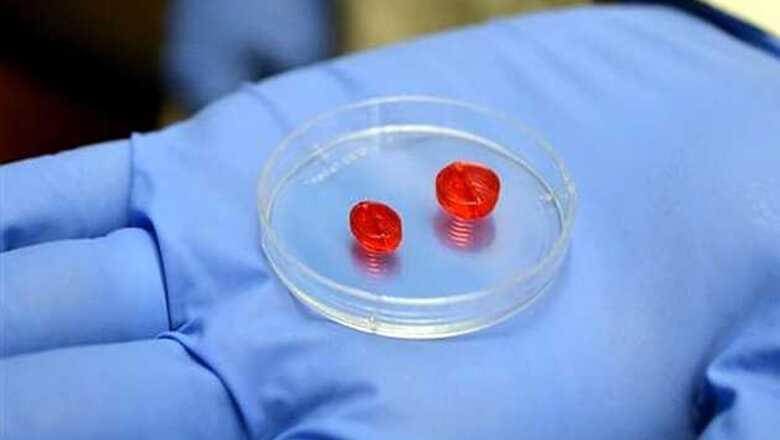
views
Washington: Scientists have figured out how to create blood vessels in 3D printed organs, a breakthrough that may eventually lead to artificial organs.
Scientists have been steadily advancing towards the goal of building lab-grown organs out of a patient's own cells, but a few major challenges remain.
One of them is making vasculature, the blood vessel plumbing system that delivers nutrients and remove waste from the cells on the inside of a mass of tissue. Without these blood vessels, interior cells quickly suffocate and die.
Scientists can already grow thin layers of cells, so one proposed solution to the vasculature problem is to "print" the cells layer by layer, leaving openings for blood vessels as necessary.
But this method leaves seams, and when blood is pumped through the vessels, it pushes those seams apart. Researchers from the University of Pennsylvania have
turned the problem inside out by using a 3D printer called a RepRap to make templates of blood vessel networks out of sugar.
Once the networks are encased in a block of cells, the sugar can be dissolved, leaving a functional vascular network behind.
Bioengineering postdoc Jordan Miller, along with Christopher Chen, other members of Chen's lab and colleagues from Massachusetts Institute of Technology (MIT), set out to show that this method of developing sugar vascular networks helps keep interior cells alive and functioning.
After the researchers design the network architecture on a computer, they feed the design to the RepRap. The printer begins building the walls of a stabilising mold.
Then it draws filaments across the mold, pulling the sugar at different speeds to achieve the desired thickness of what will become the blood vessels.
After the sugar has hardened, the researchers add liver cells suspended in a gel to the mold. The gel surrounds the filaments, encasing the blood vessel template.
After the gel sets it can be removed from the mold with the template still inside. The block of gel is then washed in water, dissolving the remaining sugar inside. The liquid sugar flows out of the vessels it has created without harming the growing cells.
"This new technology, from the cell's perspective, makes tissue formation a gentle and quick journey," said Chen.




















Comments
0 comment